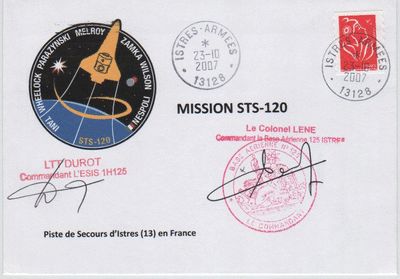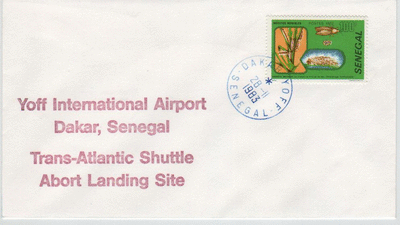Space Cover 381: Istres, France – Transoceanic Abort Landing siteAfter the Feb. 1, 2003 Columbia disaster a full examination of the space shuttle program was carried out.
A special committee called Columbia Accident Investigation Board offered to NASA 29 total recommendations to improve the future manned shuttle flights including a review of materials used and a redefinition of technical and procedures developed in all phases of the space mission: pre-flight, launching, in-flight, landing and post-flight.
STS-114 Discovery launched July 26, 2005 was the "Return to Flight" mission and was the first one to see the new Transoceanic Abort Landing site (TAL) of Istres, in the south of France.
Air Force Base 125 of Istres as TAL was the result of an agreement signed in June 8, 2005 in Washington between NASA Administration Michael Griffin and France ambassador for USA Jean-David Levitte.
Istres became operative soon in July 2005 and would be one of the three majors TAL in the rest of STS program (together to Zaragoza and Moron, both in Spain). It was selected by NASA because the Istres landing runway is +5.000 meters long, the longest military runway in Europe and, primarily, because NASA wanted to be sure to have under control any unexpected situation in any phase of space mission.
Istres, as the rest of TAL scheduled along all STS missions was, fortunately never activated, and was operative from STS-114 until STS-135, the last shuttle mission.
The cover above pictured, signed by Colonel Lenne as Air Base commandant, and Lieutenant Durot, as ESIS (Escadron de Sécurité Incendie et de Sauvetage or Security Squadron Fire and Rescue) marks the launch date for STS-120 Discovery which delivered to ISS the space module Harmony (built in Turin, Italy by Thales Alenia Space Italy) and was accompanied to space by Italian astronaut Paolo Nespoli as mission specialist.
It is an illustrative example of an USA space cover with European participation (the French TAL and the Italian astronaut) which should encourage to European astrophilatelists to find Europe references inside of an USA space program.














